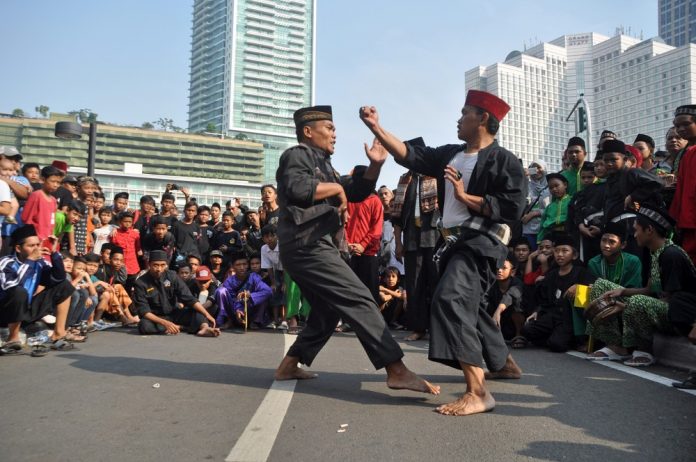Traditional Indonesian martial art pencak silat was added to UNESCO’s Representative List of the Intangible Cultural Heritage of Humanity in Bogota, Colombia, on Thursday local time. The announcement made pencak silat communities shed tears of happiness, as they had been working toward such recognition since 2017, Pencak Silat Indonesia Community founding board member Wahdat MY said in a press conference in Jakarta on Friday. Indonesian pencak silat practitioner-turned-actor Yayan Ruhian also welcomed the news, telling The Jakarta Post via telephone that he felt happy upon hearing it and hoping that pencak silat could be accepted by a wider audience, not just martial arts lovers. According to The Fighting Art of Pencak Silat and its Music: From Southeast Asian Village to Global Movement, edited by Uwe U. Paetzold and Paul H. Mason, the term pencak silat is a composite of recent origin (late 1940s), deriving from the Sundanese/Javanese word penca(k) and the Malay and Sumatran word silat. The term was made official by the Indonesian Pencak Silat Association (IPSI) in 1973 during a congress in Tugu near Bogor, West Java, as the conceptual basis for a competition for the native self-defense art, enabling it to be included in the National Games as a regulated sport. Both words have their own etymologies. Though the government-backed IPSI focuses on pencak silat as a sport, Wahdat said that pencak silat consisted of other aspects, such as spirituality and the arts. There are more than 40 different pencak silat aliran (teachings). Some of the most popular ones include Cimande from West Java and Silek from West Sumatra. “There are more unexposed teachings, such as those from Sulawesi,” Wahdat said. In recent years, pencak silat has caught the attention of international filmmakers. Indonesian actors and martial artists Yayan, Iko Uwais and Cecep Arif Rahman have been involved in various action film franchises, such as The Raid and John Wick, showcasing the Indonesian martial art to the world. LifeLike Pictures film producer Sheila Timothy singled out The Raid as the one film that catapulted pencak silat into global film industry fame. She said the martial art was one of the strengths of Wiro Sableng: Pendekar Kapak Maut Naga Geni 212, which was produced by LifeLike Pictures in collaboration with Fox International Productions, a division of 20th Century Fox. “When we approached Fox International Productions, they were interested in our ideas as we shared that we wanted to include original Indonesian martial arts in pencak silat,” Sheila said. “Pencak silat is really interesting as it also contains philosophies. It can be explored further.”
The Education and Culture Ministry’s director general of culture, Hilmar Farid, said UNESCO considered pencak silat a tradition and contribution to humanity and human civilization. “Unlike Borobudur temple, which is listed as a UNESCO World Heritage Site, pencak silat is owned by the people, not the country,” Hilmar said. Hilmar explained following the announcement recognizing pencak silat as a piece of intangible world heritage that silat from Malaysia had also been recognized by UNESCO. Speaking about the differences, Hilmar stressed that silat was highlighted as martial arts. “Meanwhile, martial arts is among the components of pencak silat. It contains a larger cultural heritage, featuring movement and music.” Hilmar said based on ancient inscriptions, pencak silat also involved self-control and character-building lessons that had been passed down from generation to generation, adding that the recognition opened the door to more opportunities to preserve pencak silat. Speaking about the future of pencak silat, Wahdat said there was a lot of work to do to continue to support the traditional art, which was largely only taught in small communities – pencak silat practitioners and teachers frequently have to dig into their own pockets to fund their activities. “The organizational system is weak. Hopefully, after being recognized by UNESCO, it can help to motivate [pencak silat practitioners],” Wahdat said. “I’m afraid about us stopping here.”




























